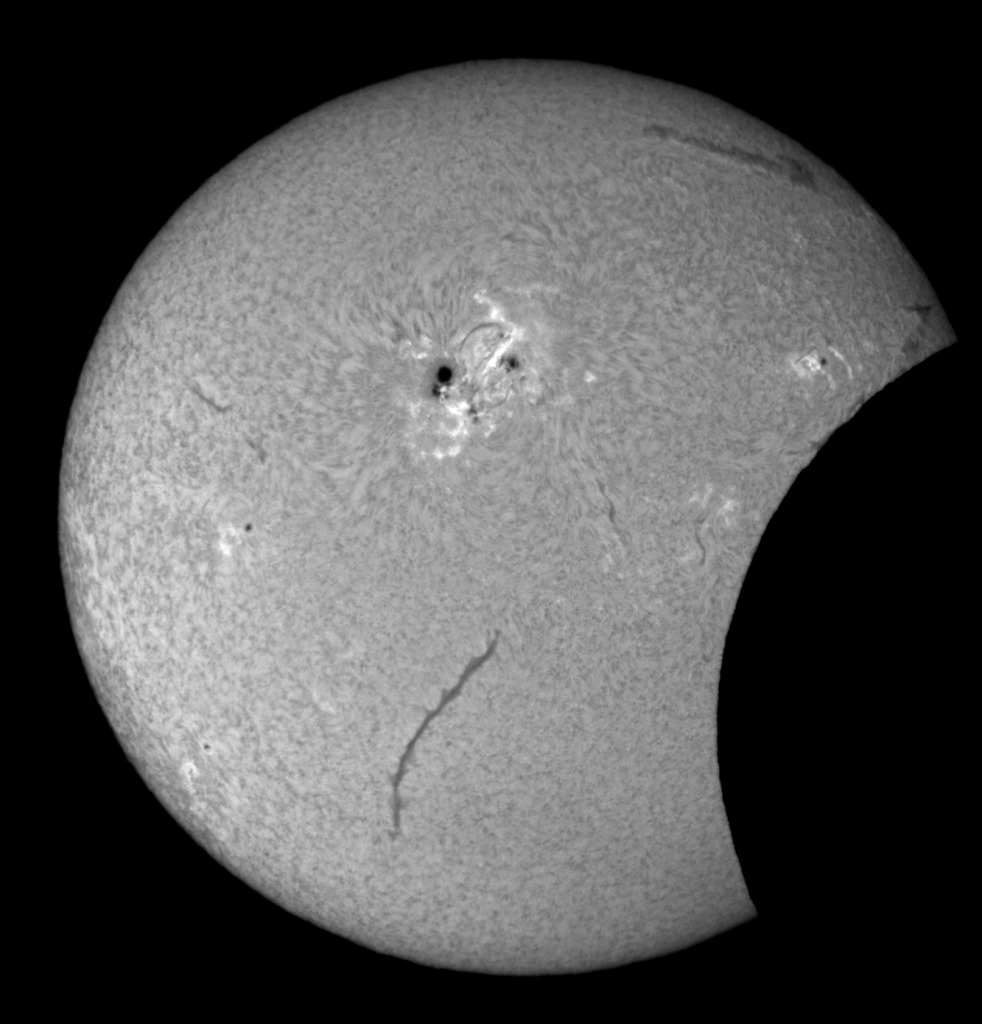The PTO made its first road trip today to get a view of the partial solar eclipse visible from the panhandle. The tree line here at the observatory would not allow a view so I had to pack up everything and head to my favorite western horizon; the military drop zone just south of I-10.
I had not used the new Point Grey camera with the Lunt H-Alpha scope before so some time was spent this morning in the driveway figuring out the correct configuration for the telescope / camera combination. A new voltage converter also made its debut to ensure the laptop wouldn’t stop mid eclipse and to power the camera. With so much equipment making its rookie start a dry run was in order. I wanted to make sure all the cables would reach where they needed to and that I brought along everything I would need. It was time well spent as all the bits and pieces were on hand, the cords and cables got where they needed to go and I was up and running and focused a good half hour before the estimated time of first contact. I also brought along a filtered Orion 4.5″ Starblast telescope so I could view the event in white-light and in case the spectacle drew any passers-by.
My plan was to start taking images 5 minutes before the eclipse started and get an image every 10 seconds from then until the celestial pair dropped below the distant tree line.
At least, that was the plan.
First deviation: timing. Luckily, my impatience took hold and I started the camera about 7 minutes early. First contact is just visible in image 4. Yep, between 30-40 seconds after I pushed the button.
And as always, Mother Nature marches to her own drummer and well before the tree line came into view, the Sun-Moon pairing dropped behind some distant clouds and the event was over.
The above image was taken just before the clouds made their entrance. This H-Alpha view does not give active region 2192 its due. The white-light view shows the largest sunspot complex that I have ever seen. The sunspot is large enough to view naked-eye with an old pair of eclipse glasses. Along with active region 2192 there are also two impressive filaments visible. Ultimately, I got 241 images before the clouds became objectionable. I will massage those into an animation and post it when finished. All the equipment played well together and there were no injuries. All-in-all a successful event.
Finally, I would like to thank one of our county’s finest. Just after the clouds started to intrude into the eclipse a patrol car passed by, saw the hood open on the van (remember the voltage converter), turned around and came back to make sure I didn’t need any help. Of course, I didn’t, but could have. Thank you Officer.
